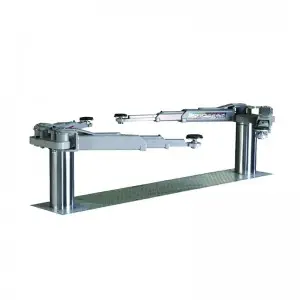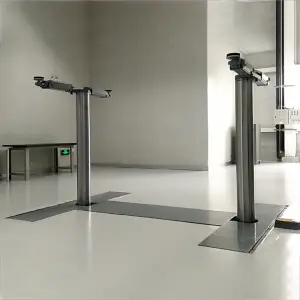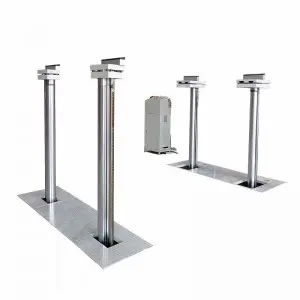****
Cylinders are one of the most fundamental shapes in geometry and play a crucial role in various fields, from engineering and design to everyday use applications. Defined as a three-dimensional shape with two parallel circular bases connected by a curved surface, cylinders are not only aesthetically pleasing but also functionally essential in numerous contexts. This article will explore the significance, applications, and innovative designs of cylinders across different domains, emphasizing their versatility and importance.
Definition and Characteristics of a Cylinder
A cylinder is characterized by its two identical circular bases and a curved surface that connects these bases. The height of the cylinder is the perpendicular distance between the two bases, while the radius is the distance from the center of one base to its edge. Two primary types of cylinders exist: right cylinders, where the sides are perpendicular to the bases, and oblique cylinders, which slant to connect the bases at an angle. The mathematical properties of cylinders, including volume and surface area, make it a topic of interest in geometry.
Applications of Cylinders in Engineering

Exploring the Versatility and Applications of Cylinders in Engineering, Design, and Everyday Life
In the engineering realm, cylinders are ubiquitous. From pressure vessels to hydraulic systems, their structural integrity and geometric properties allow them to withstand significant amounts of pressure while maintaining functionality. For instance, many manufacturers utilize cylindrical pressure vessels to store gases or liquids safely. The cylindrical shape effectively distributes stress, reducing the likelihood of structural failure.

Exploring the Versatility and Applications of Cylinders in Engineering, Design, and Everyday Life

Exploring the Versatility and Applications of Cylinders in Engineering, Design, and Everyday Life
In automotive engineering, cylinders are pivotal components of internal combustion engines. An engine consists of multiple cylinders that house pistons, igniting fuel to create motion. The design and arrangement of these cylinders can significantly impact an engine’s power, efficiency, and performance, prompting continuous innovation in engine design.
Cylinders in Architectural Design
Architectural design also benefits from the aesthetic appeal and functional characteristics of cylinders. Columns, often cylindrical in shape, are essential in supporting structures. They provide both stability and visual elegance, allowing architects to create open and airy spaces while ensuring safety and strength. Famous structures, such as the Parthenon in Athens, showcase the beauty and effectiveness of cylindrical columns in classical architecture, demonstrating the enduring legacy of this shape through the ages.
In modern architecture, cylindrical structures continue to inspire innovative designs. Buildings like the National Museum of Qatar and the Guggenheim Museum in Bilbao incorporate cylindrical elements that enhance their visual appeal while offering unique functional spaces. These designs demonstrate how cylinders can create dynamic environments, blending form and function adeptly.
Everyday Applications of Cylinders
Beyond engineering and architecture, cylinders are also prevalent in everyday life. Many household items take a cylindrical form: cans, bottles, and tubes, to name a few. Cans are specifically designed in a cylindrical shape for efficient storage and distribution, optimizing the use of space while ensuring product safety. Cylindrical bottles are ubiquitous because the shape allows for easy gripping and pouring, enhancing user experience.
In the kitchen, cylindrical cooking utensils, such as rolling pins or mixing bowls, offer practicality and ease of use. Their shapes facilitate movement and application during cooking and baking, highlighting how cylinders enhance our daily tasks.
Innovations and Future Prospects
As technology progresses, cylinders are being integrated into modern innovations, particularly in fields like 3D printing and robotics. Engineers and designers are increasingly exploring the use of cylindrical forms for creating lightweight, durable components that can be used in robotics. Additionally, advanced materials such as carbon fiber or composite materials are being utilized to create cylindrical structures that are not only strong but also lightweight, opening the door to new possibilities in aerospace and automotive industries.
In the realm of renewable energy, cylinders are pivotal in wind turbines and batteries, where their design contributes to efficiency and effectiveness. As the world shifts toward sustainability, the application of cylinders in green technology is likely to expand, highlighting their versatility in promoting environmentally-friendly solutions.
Conclusion
In conclusion, cylinders have emerged as an indispensable shape in various fields, from engineering to everyday applications. Their unique properties enable them to fulfill essential roles in design, architecture, and functionality. As we continue to innovate and find new uses for this geometric shape, cylinders will undoubtedly remain at the forefront of engineering and design, shaping both our environments and everyday experiences. Their beauty and utility will continue to influence future advancements, proving that simple geometric forms can have profound impacts on our world.quicklift car lift



